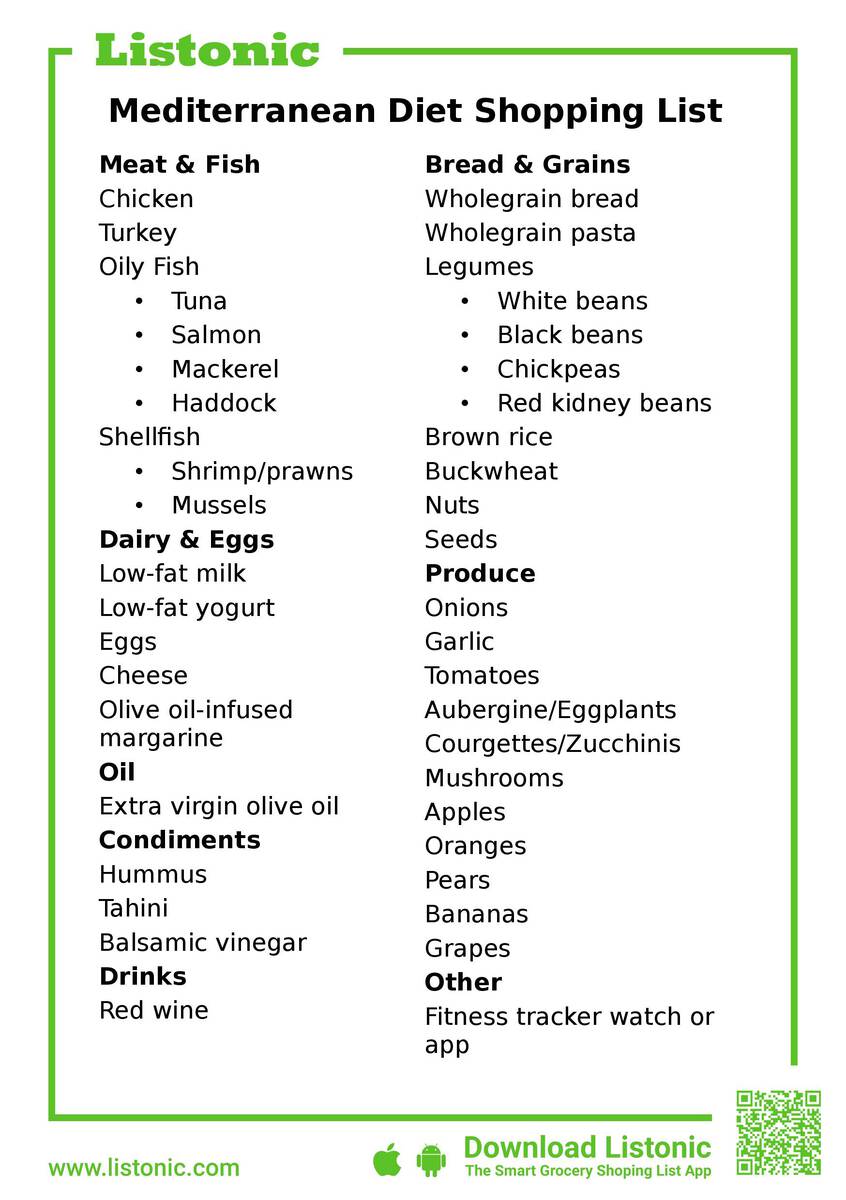We all love sunshine and good food, and Mediterranean countries certainly have both. But what they seem to also have is better health than their American or British cousins. But why is that? For over 2 decades dietitians have put this down to their healthy eating habits and a good amount of physical activity. So, why not be more Mediterranean and improve your health and lose weight using our Mediterranean diet shopping list?
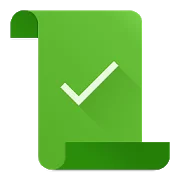
Top Rated Shopping List App
Share And Synchronize An Unlimited Number
Of Lists With Others Instantly and Easy
Contents
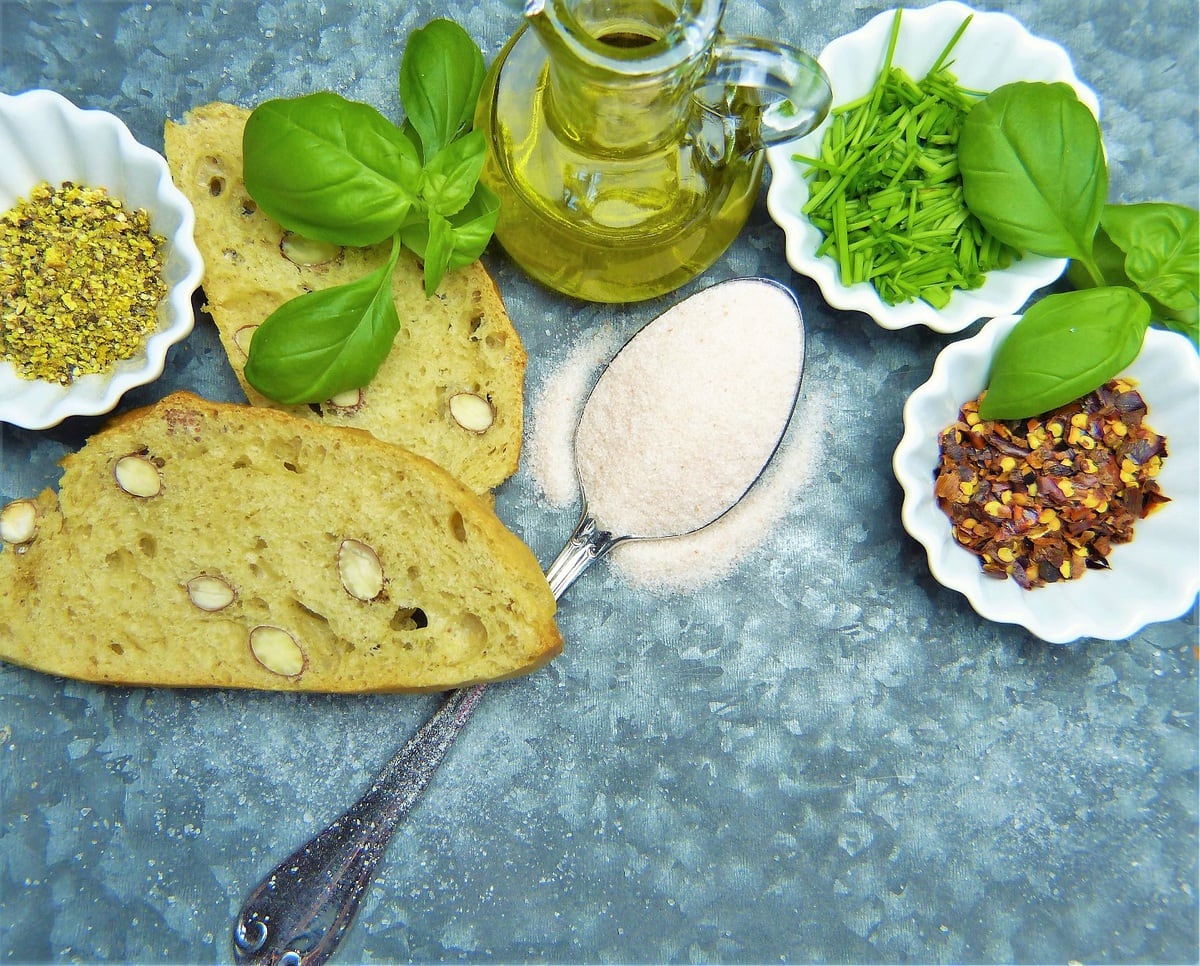
Overview
The diet was first developed by Harvard School of Public Health and Oldways, a nonprofit food think tank, back in 1993 as a food pyramid. It has since evolved into a fully fledged diet.
The whole idea of the diet is about making long-term and healthy lifestyle changes and eating patterns that match those of southern Europeans. It’s not about rapid weight loss or strict meal plans. It’s more about flexible and fundamental changes to how you eat and keep yourself active.
Indeed, there are many underlying healthy eating factors involved in this diet that are similar to those you can find on our healthy grocery list or in our flexitarian diet guide.
The diet includes:
- Avoiding red meat and sweets
- Opting for leaner white meat, such as poultry
- Eating fish, especially oily fish
- Using plenty of olive oil in cooking
- Eating wholegrain and wholemeal products
- Eating lots of fruit and vegetables
- Having a glass of red wine with your evening meal
- Doing plenty of exercise
So, let’s go over the benefits of the diet, answer some burning questions, and provide you with a Mediterranean diet shopping list template to get you started. However, you can skip straight to the end and download a free printable version of the grocery list if you want.
Benefits
The diet has several much-touted health benefits.
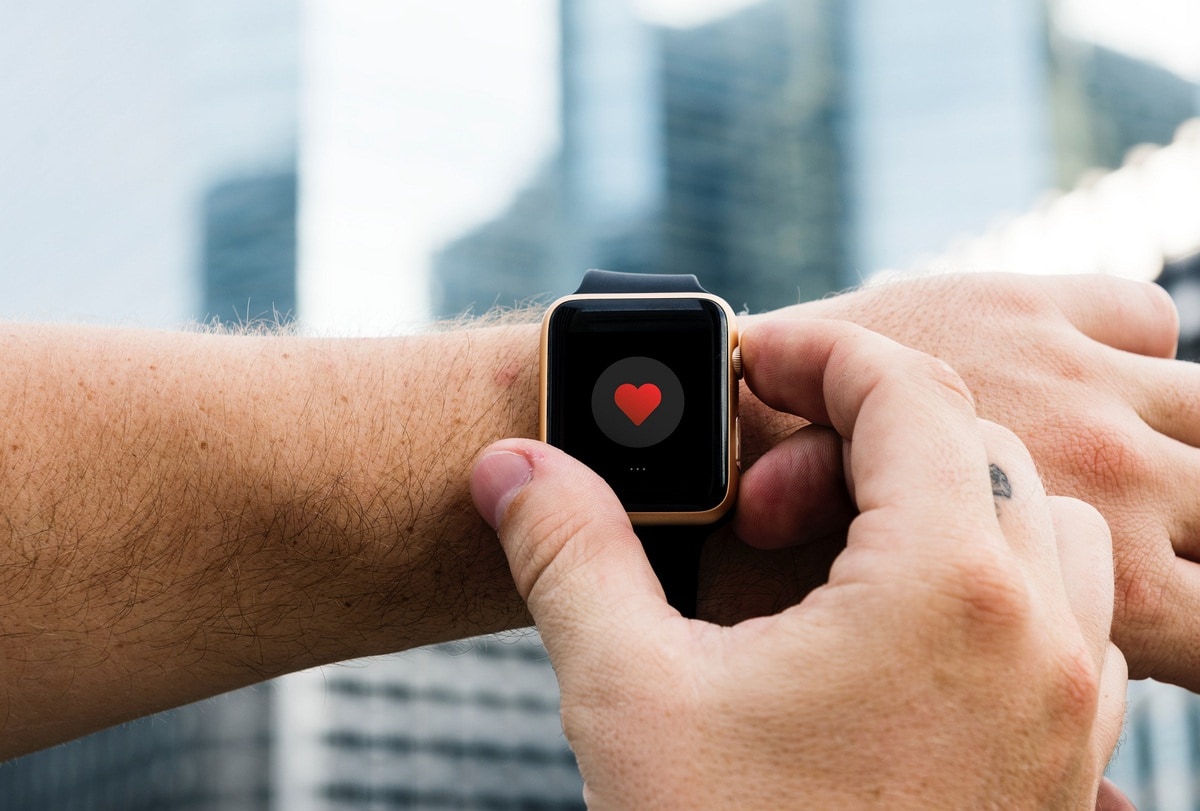 Heart Health
Heart Health
One of the biggest health benefits of this diet is how good it is for your heart. There have been many studies into the cardiovascular benefits of the diet. It’s found to:
- Lowersbad cholesterol (LDL)
- Increases good cholesterol (HDL)
What it means is that you can reduce the risk of heart disease. But why is this?
It’s because the diet shuns red meat which is high in saturated fat and opts for leaner white meat: namely poultry. Also, its emphasis on eating a lot of fruit and vegetables, using plenty of olive oil rich in omega-3 fatty acids, and staying active, all contribute to improving your heart health.
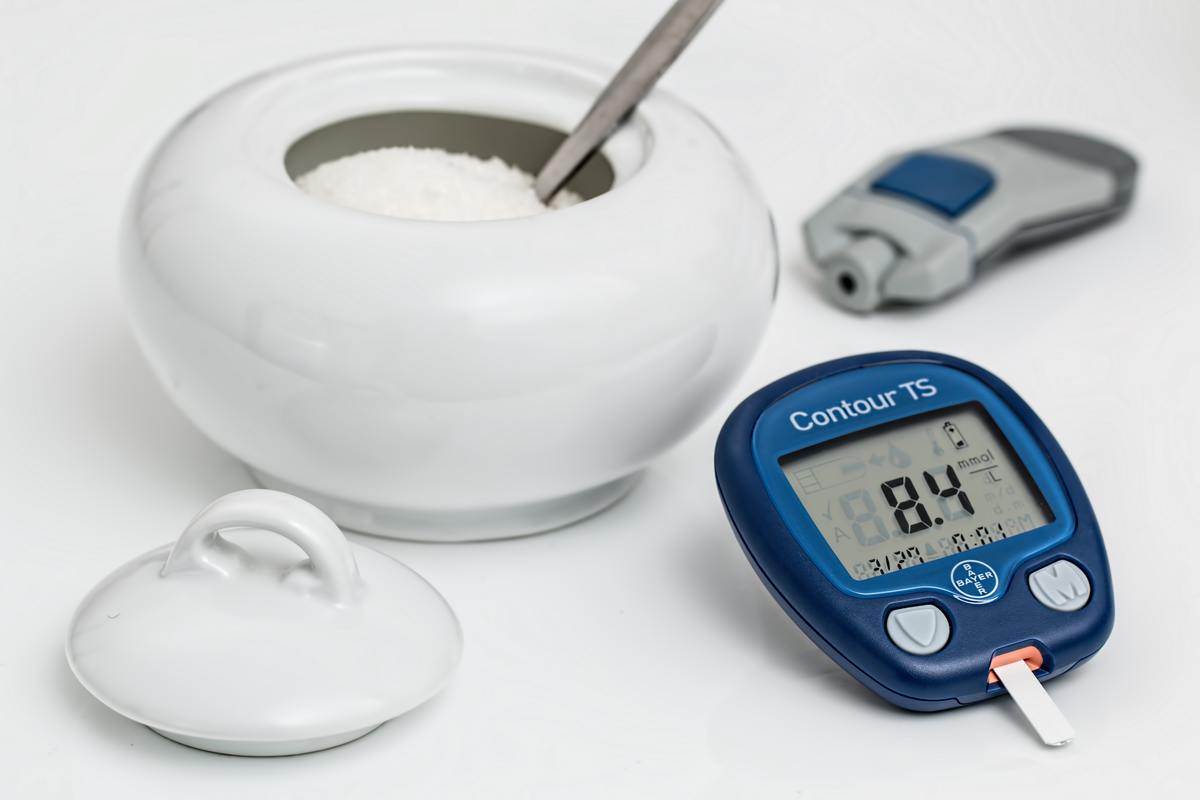 Blood Sugar
Blood Sugar
In 2017, a report found that 9.4% of people in the USA have type 2 diabetes and pre-diabetes. That’s around 100 million people. It’s also the USA’s 7th leading cause of death. In the United Kingdom, although the figure might be slightly lower coming in at 6.2% of adults, the amount has more than doubled between 1996 and 2015. Diabetes is also a growing problem globally.
But can the Mediterranean diet help?
It certainly can!
The biggest risk to becoming diabetic or developing pre-diabetes is being overweight. The diet can help you lose weight and therefore lessen your chances of developing type 2 diabetes. Because the diet is also about long-term and sustainable weight loss, you’ll be less likely to drift back into the danger zone.
What’s more, if you already have diabetes, studies have shown that the diet can help significantly control your blood sugar levels, and even reduce them over time.
Mediterranean Diet FAQs
If your interest has been piqued, then you’ll most certainly have some questions about the diet. So, let’s try and answer them.
How easy is it?
It’s not one of the easiest diets to follow, but it’s certainly not hard. The reason it’s not easy is that it doesn’t have a defined meal plan and relies on you making changes to your eating and grocery habits.
This means you’ll have to do a bit more of your own planning to create a robust Mediterranean diet plan, and also exert a little bit of willpower to stick to the food you should be eating. A Mediterranean diet shopping list will certainly help.
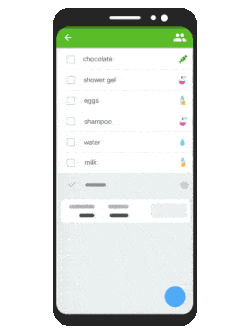
Create Your Own Mediterranean Diet Shopping List!
- Download the highest rated shopping list app for free
- Always with you on any device
- Buy exactly what you planned
- Make and share shopping lists together
- See items automatically grouped into categories
Another difficult part of the diet is that you’ll also need to increase your activity: a crucial part of the diet. Depending on your current level of activity, and how pressed for time you are, this could prove challenging for some.
Making things easier is that this is a well known and established diet so it’s actually really easy to find plenty of recipes online to inspire you and help you plan your meals.
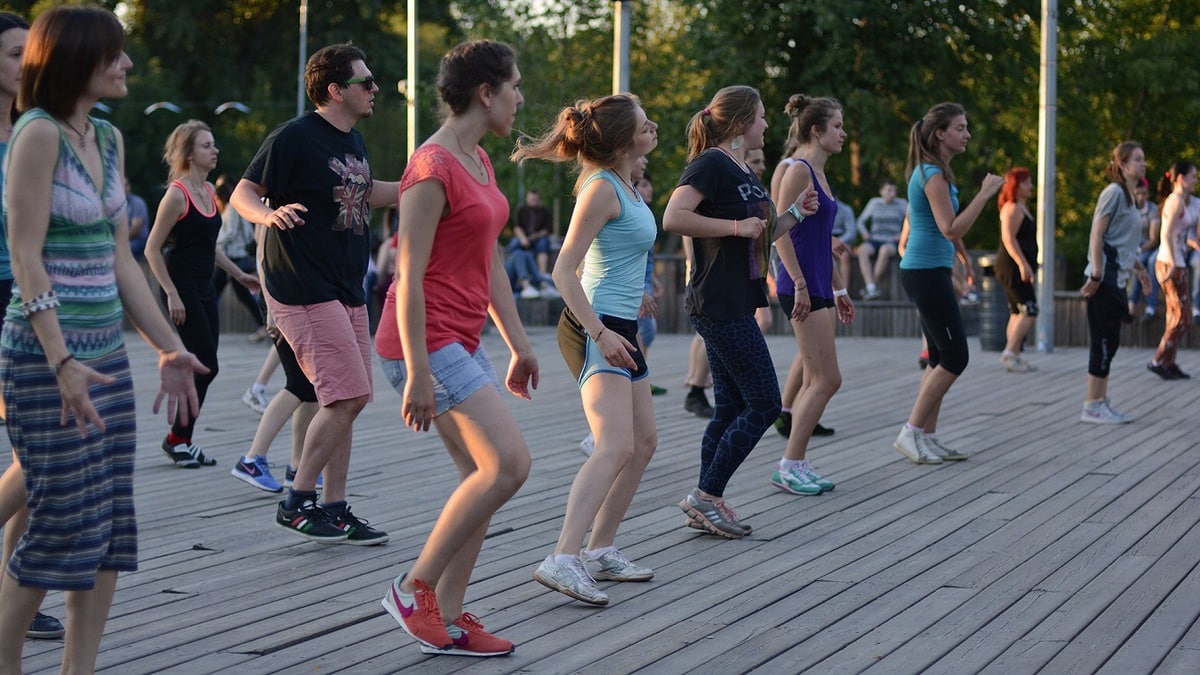 Do I really need to do more exercise?
Do I really need to do more exercise?
Absolutely.
However, this doesn’t mean that you’re expected to be signing up to every available marathon, and end up living at the gym. The diet is more about being at least a little bit more active, rather than pumping iron 24/7.
Being more active can simply be achieved by doing some more walking than you usually do. Try catching public transit from a stop further away to your usual, or making time for leisurely strolls now and then. Or, swap your car or bus commute with a bicycle one.
However, the more active the activity, the better. But this still doesn’t mean sweating away at the gym by yourself. You can learn a new sport, or join a dance class for more social exercising. Whatever you do, just don’t be languishing on the couch or in front of the computer for too long.
One thing you could do to help is to buy a fitness tracking watch or even download an equivalent app for your phone. Whilst these won’t directly help you lose weight and become healthier, they can serve as motivation and monitoring tools to help spur you into becoming more active.
 Do I really need to drink wine?
Do I really need to drink wine?
This is completely up to you.
There are many purported benefits to drinking 1 glass of red wine with a meal on a regular basis. This is why it’s part of the diet.
These benefits include:
- Lowering your post-meal blood sugar
- Increasing your good cholesterol (HDL)
It is recommended that you drink red wine instead of white wine, as the ruddier version has more antioxidants than its paler counterpart.
But you should only drink a glass of wine with your meal if you have the willpower to stick to only 1 glass. Drinking more than this can pile on unnecessary extra calories and start causing negative effects. These can be in the form of increasing the risk of liver disease and stomach ulcers.
It’s important to note that there is no “safe” level of drinking alcohol. 1 glass of wine with your meal is considered “low risk”, even taking into account the benefits it’s supposed to have.
So, it’s up to you whether you include wine as part of the diet or not.
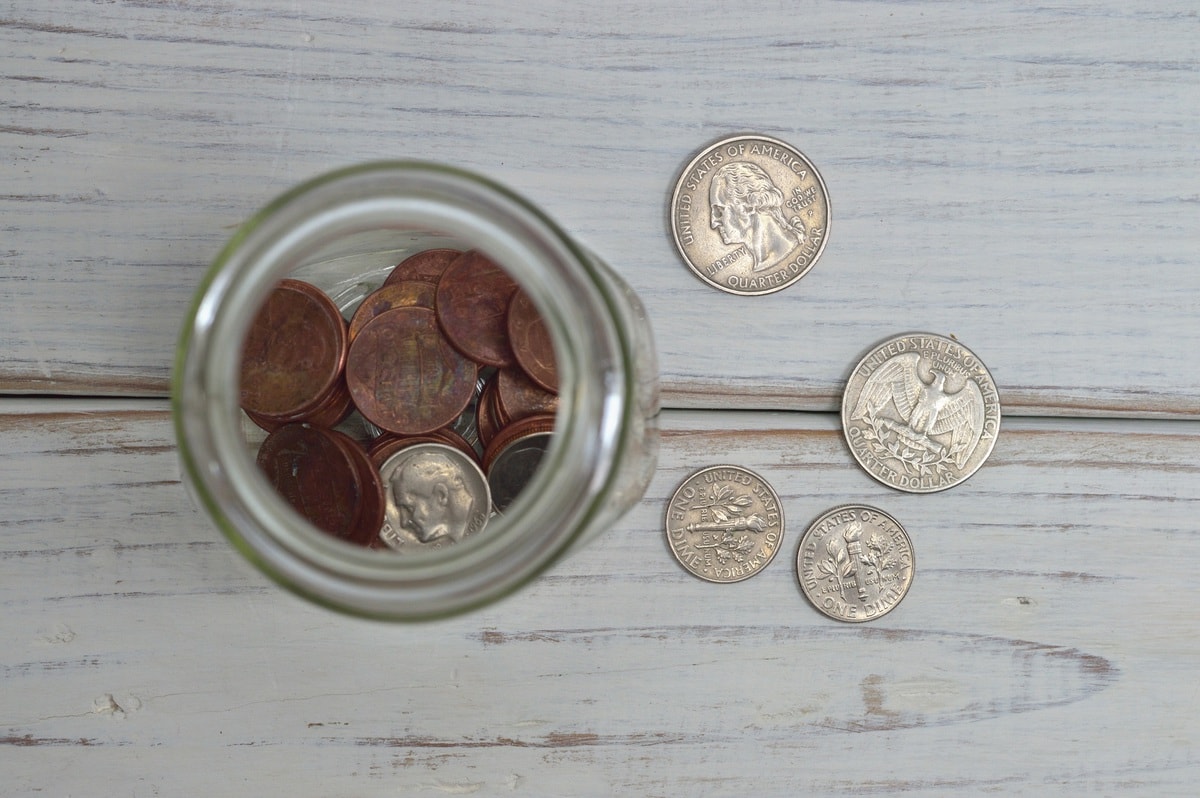 Is the diet cheap?
Is the diet cheap?
If you’re going to include a lot of olive oil and wine, the diet is going to err on the side of expensive. Especially as, the more “virgin” the olive oil is, the purer it is. This means that extra virgin olive oil is healthier than virgin olive oil as it has gone through less processing. But this also makes it pricier. However, you can omit the wine, and/or opt for cheaper oil that is still rich in omega 3.
You can reduce costs further by eating more vegetarian meals than meat. Like with the flexitarian diet, you can replace meat protein with that from food such as pulses, which also contains a high amount of fiber. If you buy dried pulses instead of canned, your outgoings will be even less, although your meals will take longer to prepare.
 Is there anything I can’t eat?
Is there anything I can’t eat?
Nope.
You’re still free to eat whatever you want. However, food containing a high amount of saturated fat and refined sugar should be avoided as much as possible.
This means you can certainly still have that steak or fried chicken now and then, or a nice bit of your favorite chocolate. But these should be something you do from only from time to time.
It might be hard to adjust to these changes and the absence of these treats at first. Willpower and some smart shopping can help here. Try snacking on wholegrain bread dipped in oil, or eating a nut and seed mix. Instead of having ice cream or sugary puddings for dessert, try having plenty of fresh fruit to hand. Or at least opt for low-fat yogurt. These will certainly stave off any cravings you might have at the start, and help you adjust to your healthier diet.
TIP
Use olive oil instead of butter. You can even mix it with some tangy balsamic vinegar. However, if you would still rather spread something on your bread, try and olive oil-infused margarine, hummus (a paste made from chickpeas), or tahini (a paste made from sesame seeds).
After a time, you’ll be looking forward to your indulgent treats. But you might find you’re not missing them nearly as much as you thought you would.
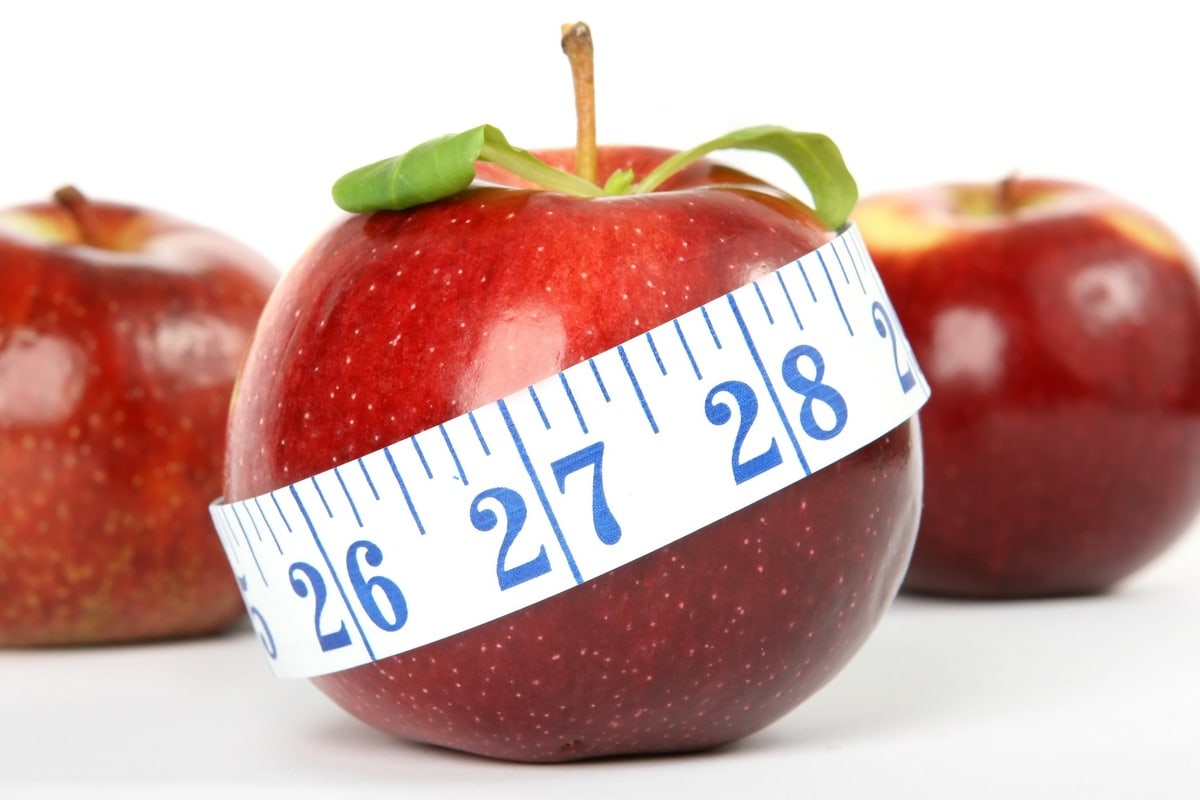 Will I lose weight?
Will I lose weight?
Certainly.
But it must be noted that this is not a rapid weight-loss diet. The weight loss you will see will definitely be gradual, but you can sleep easy knowing that this is sustainable. You won’t see it coming back to haunt you any time soon.
Indeed, Oldways calculates that the diet innately puts people at a calorie deficit of 25-40% against daily recommendations. Even if you’re being more free with what you eat, chances are you’ll still be eating fewer calories and will start naturally losing weight.
However, if you want to be sure you’re heading towards weight loss, you can always use a calorie counter to keep track of what you eat.
If you want to see more instantaneous results, you might want to consider something like the Military diet. However, it should be noted that the nutritional benefits of this are nowhere near that of the Mediterranean diet.
 Is the diet healthy?
Is the diet healthy?
Exceptionally!
You’ll be eating plenty of fruit and veg, ingesting lots of omega 3-choc olive oil, doing plenty of exercise, and avoiding food high in saturated fat and refined sugar.
The increase of fruit and vegetables in your diet will mean you’re getting plenty of vitamins, minerals, and fiber that are key to keeping you healthy. The avoidance of saturated fat and sugar will keep your calorie intake steady.
In fact, the diet is so healthy that USA News, considered an authority on global diet trends, rated it as it’s #1 diet of 2019, alongside the DASH diet.
Your Mediterranean Diet Food List
If you’re as excited about this diet as we are, then you’ll no doubt be eager to download and print out your free grocery list to help get you started.
Mediterranean Diet Shopping List
Copy to clipboardMeat & Fish
- Chicken
- Turkey
- Oily Fish
- Tuna
- Salmon
- Mackerel
- Haddock
- Shellfish
- Shrimp/prawns
- Mussels
Dairy & Eggs
- Low-fat milk
- Low-fat yogurt
- Eggs
- Cheese
- Olive oil-infused margarine
Oil
- Extra virgin olive oil
Condiments
- Hummus
- Tahini
- Balsamic vinegar
Drinks
- Red wine
Bread & Grains
- Wholegrain bread
- Wholegrain pasta
- Legumes
- White beans
- Black beans
- Chickpeas
- Red kidney beans
- Brown rice
- Buckwheat
- Nuts
- Seeds
Produce
- Onions
- Garlic
- Tomatoes
- Aubergines/Eggplants
- Courgettes/Zucchinis
- Mushrooms
- Apples
- Oranges
- Pears
- Bananas
- Grapes
Other
- Fitness tracker watch or app
Have you been on the diet? Is there anything missing from our Mediterranean diet shopping list? Why do you think southern Europeans are healthier than Americans or the British? Let us know in the comments.
